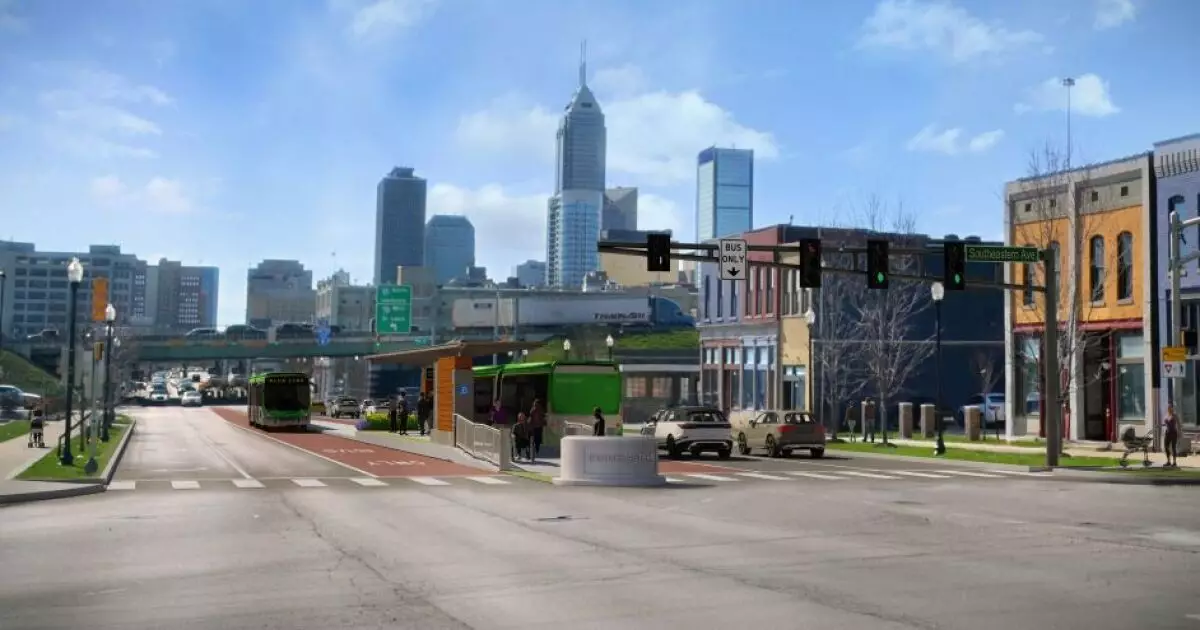Aiming for an ambitious transformation, Indianapolis is set to embark on a $125 million bond sale to launch its Blue Line Bus Rapid Transit (BRT) project. This plan outlines a 24-mile route connecting the Indianapolis International Airport to downtown and extending to the eastern fringes of Marion County. The Indianapolis Local Public Improvement Bond Bank will orchestrate the bond effort on behalf of the IndyGo transit system, making this a crucial step toward enhancing public transit in the city. However, this endeavor is not without its complications, especially given the current turbulence in the financial markets.
The bond sale was initially scheduled to price on a day marked by rising municipal bond yields, an indicator of unsatisfactory conditions within the financial ecosystem. Joe Glass, the executive director of the bond bank, noted a prudent decision to postpone the sale until market conditions improve. While reserving a cautious stance, this delay underscores the unpredictable nature of municipal finance and the need to safeguard taxpayer resources while navigating market volatilities.
Insights into Project Financing
The Series 2025A local income tax revenue bonds have received an AA-minus rating from S&P Global Ratings, denoting a relatively stable financial outlook. This rating, however, is only as strong as the underlying assumptions that back it. The city must ensure that they can generate consistent local income tax revenues to support this ambitious public transit vision. The collective responsibility lies not just with IndyGo, but also with the residents of Marion County who foot this bill through a dedicated local income tax.
It’s heartening to see municipal bonding systems designed to provide essential civic services, yet there’s a responsibility to question how effectively these funding mechanisms will stand the test of changing economic conditions. The City-County Council’s commitment to irrevocably pledge transportation tax revenues forms the backbone of this funding strategy, but public accountability remains paramount. Are we being presented with a well-calculated investment, or are we being set up for fiscal strain in future years?
The Implications of Bus Rapid Transit and Infrastructure Development
The forthcoming Blue Line, which incorporates 36 new bus stations along Washington Street, strives to emulate the convenience and efficiency of light rail using a fixed-route BRT system. This approach might be more cost-effective, but there lies a consequential challenge: how successfully this initiative will draw in ridership. Prior to the pandemic, IndyGo saw a farebox recovery ratio of nearly 10%. Now, that figure has plummeted to around 5%—a concerning shift that amplifies uncertainties regarding sustainable ridership levels in the post-COVID era.
Moreover, the need for quality public transport options cannot be overstated. As urbanization continues to unfold, cities must prioritize methods to enhance connectivity while considering the impact on existing residents. Investing in initiatives like the Blue Line could provide the much-needed public transport options and serve as a catalyst for economic growth, but the reality is that it also risks alienating riders during transitional phases. How will current riders adapt to potential inconveniences brought about by construction and change?
Understanding S&P’s Rating and Long-term Viability
S&P’s affirmation of IndyGo’s AA-minus rating reflects an opinion that stresses the importance of the transit agency in preserving the socio-economic fabric of Indianapolis. Their confidence is grounded firmly in IndyGo’s projected growth in local income tax receipts. However, while these metrics are essential, it’s equally vital to assess the invigorating impact of this service expansion on the city’s broader economic landscape.
The bond proceeds, which also aim to refund existing revenue anticipation notes, demonstrate a complex interplay of financing that remains reliant on steady income tax returns. As Andrew Stafford from S&P pointed out, maximum annual debt service coverage appears robust, suggesting a successful cushion against revenue fluctuations. However, can we maintain such optimistic projections when the economy is often riddled with unpredictability?
This scenario offers a tough examination of the realities of urban planning and fiscal responsibility. The disparity between potentially booming revenue and the actual farebox figures—representing just 5% of total system revenue in fiscal 2023—calls for vigilance and proactive measures to ensure the financial health of the transit system.
Investing in multi-modal public transportation not only serves to improve mobility but can also usher in a new chapter of accessibility and equity. The Blue Line promises much, yet the path forward is laden with a potent mix of optimism entwined with the reality of fiscal prudence.

